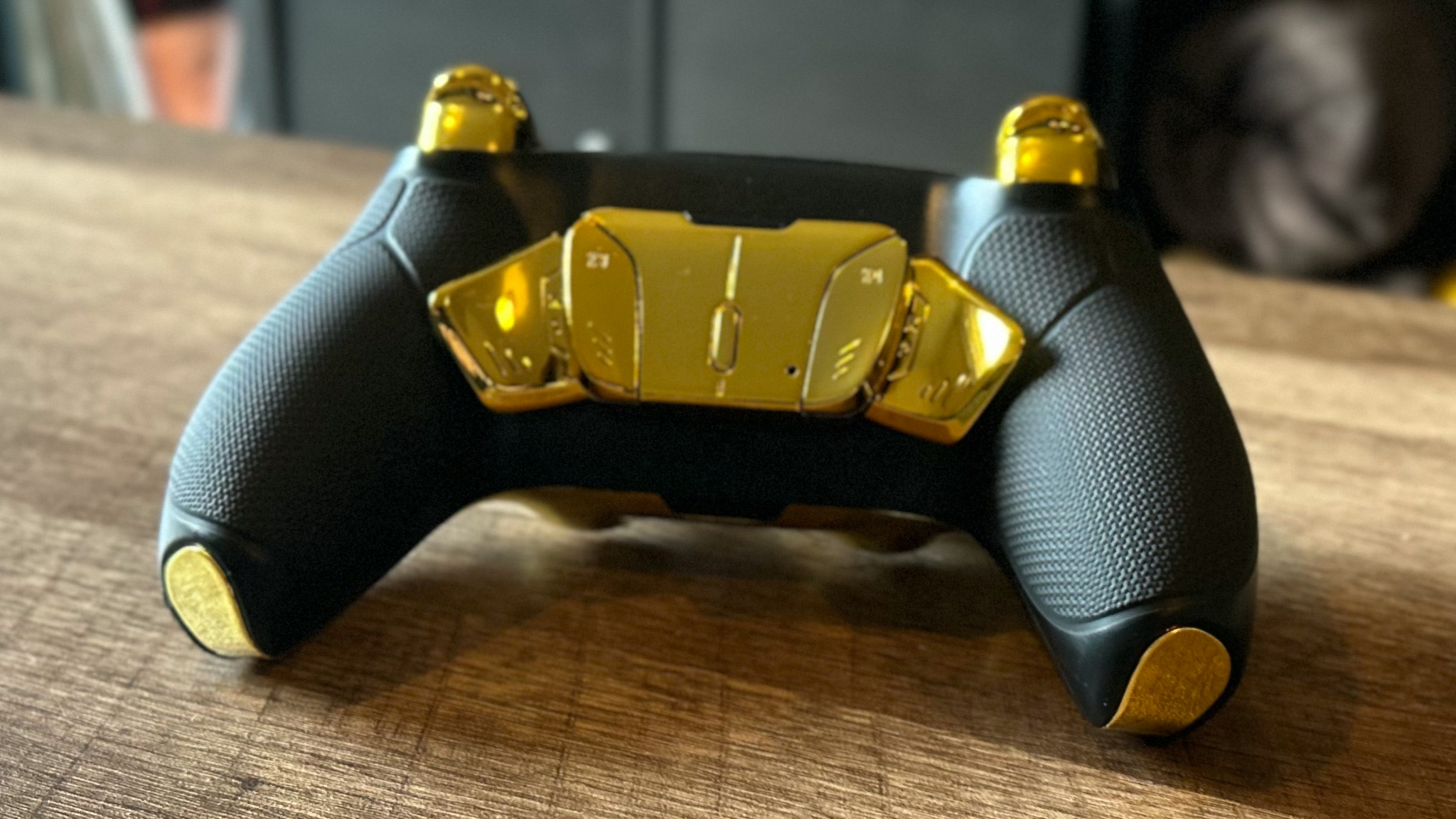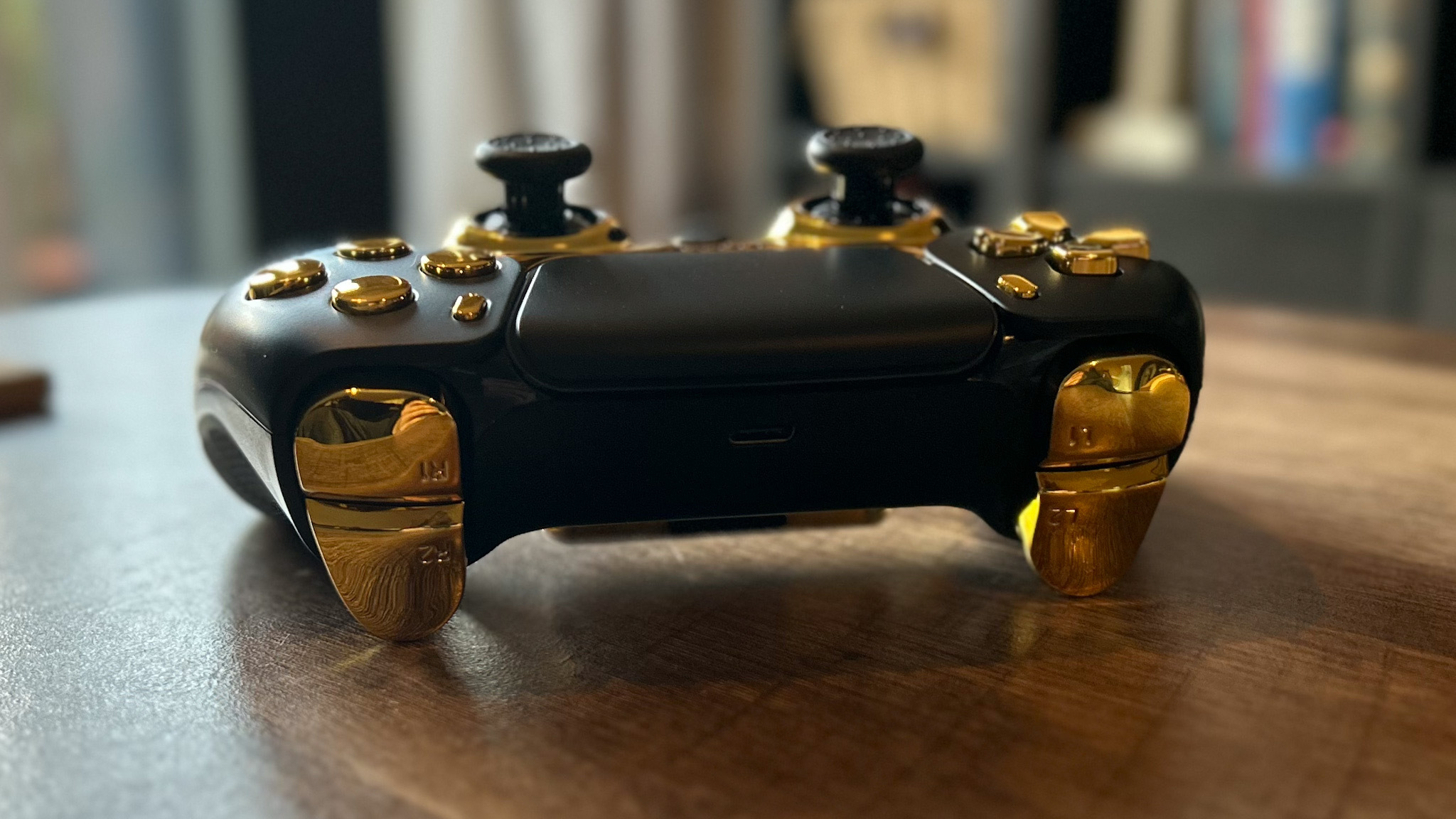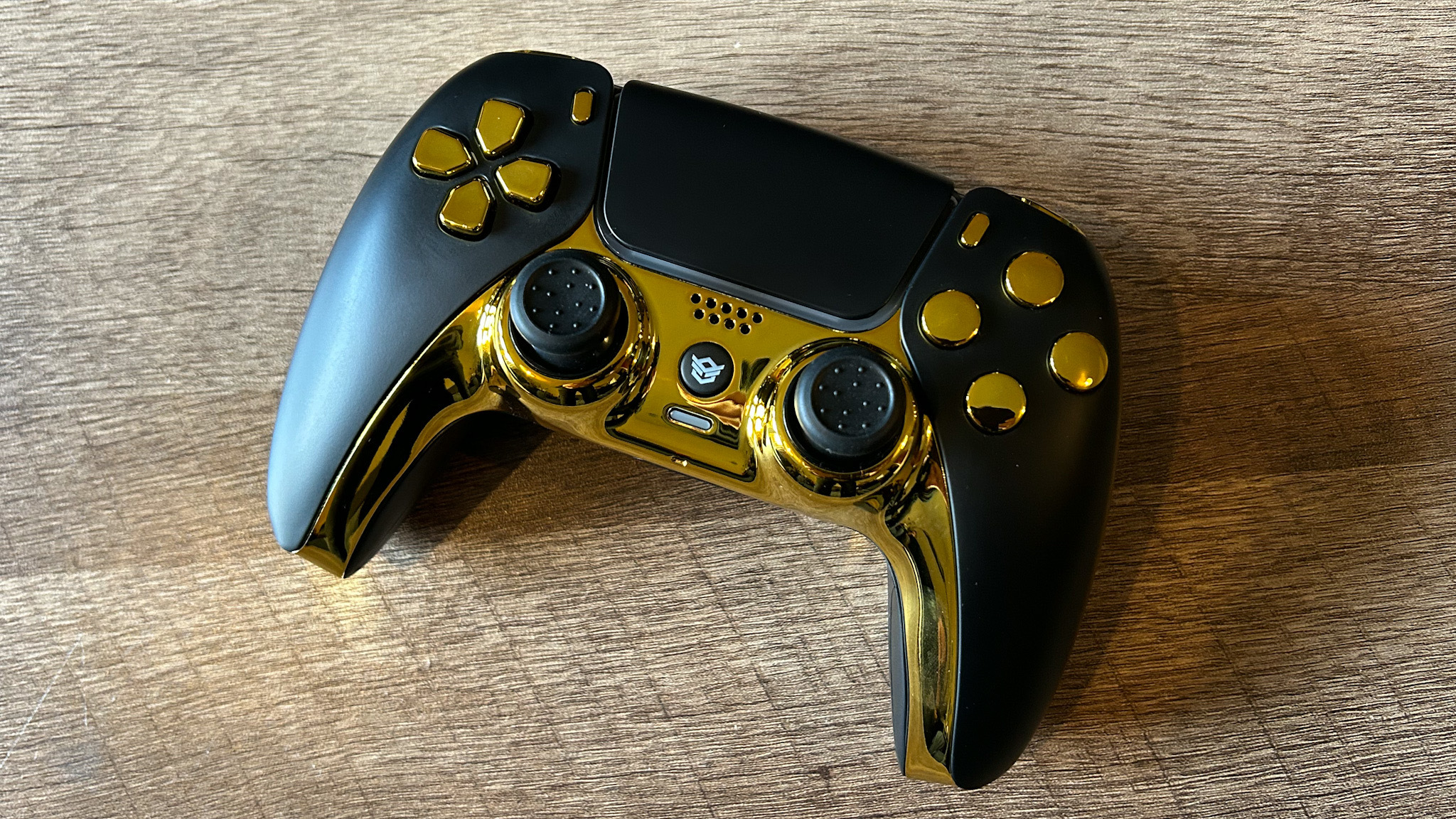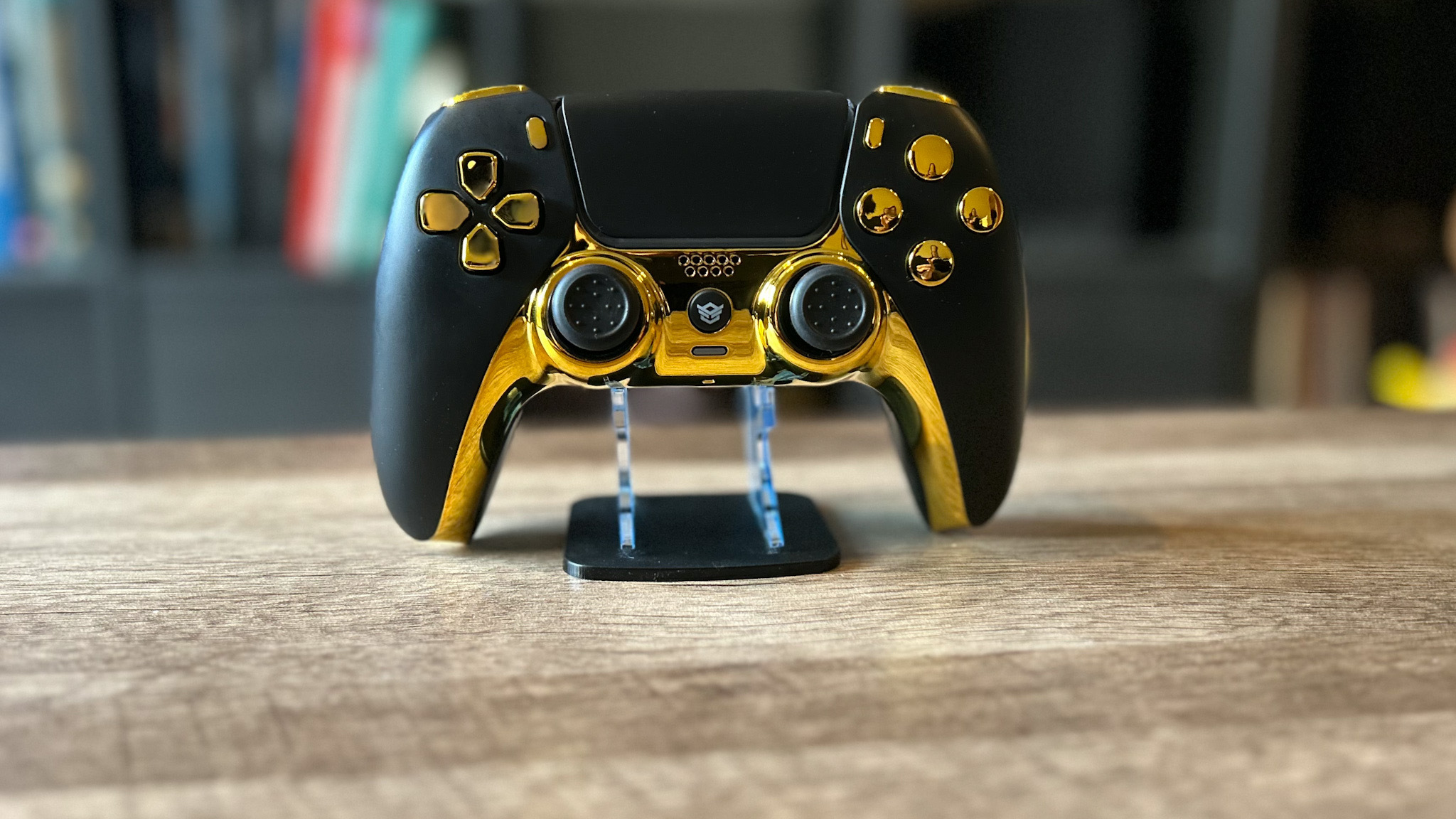GamesRadar+ Verdict
The Hex Rival Pro PS5 controller is an excellent gamepad in its own right, offering four additional back paddles and a snappy set of short triggers. However, with the DualSense Edge offering far more for just $20 more, many will struggle to get the best value for money here.
Pros
- +
Four back button attachments
- +
Speedy short triggers
- +
Premium feel and build quality
Cons
- -
Value for money doesn't hold up against Edge
Why you can trust GamesRadar+
The world of PS5 controllers is slowly expanding, and one of the latest models to throw its thumbsticks into the ring is the Hexa Gaming Rival. Built off a standard DualSense, the customizable controller offers four additional back buttons to remap, short triggers, and a plethora of designs to create. At $179.99, though, the Rival is going to have to live up to its name if it's going to take on the upcoming DualSense Edge. We put the no-quite-pro gamepad to the test over the course of four weeks, to see just where it sits among the best PS5 controllers on the market.
Design

Like the Scuf Reflex, the Hex Rival wears its customization on its face with a range of different designs to choose from before ordering. Of course, there's the classic DualSense black and white, but you'll also find camo, floral, and galaxy-themed colorways among the options listed on Hex's site. You don't have the specific color-picking options of the Scuf range here, though, so you're limited to the designs Hex has created.
We received the FlashShot design with a matte black body and shiny metallic accents around the thumbsticks and buttons. Would I personally have preferred a different design? Yes, but everything feels solid in its construction and if you're a fan of the shinier side of gaming accessories, you'll feel right at home here. The matte body feels excellent underhand, especially thanks to the additional grips placed along the back of the main handles. Meanwhile, the metallic gold sections didn't smudge or hold fingerprints nearly as much as I was expecting them to.

Around the back, you'll find an Iron-Man esque panel attached with four remappable buttons and a center button used for setting and forgetting your configurations. The only other difference from a standard DualSense controller lies in the home button, which sports the Hex logo instead of Sony's own seal.
Features
The main feature of the Hex Rival sits on the back, a set of remappable controls is formed of two back paddles and two back buttons on a raised plate. The paddles are well-placed for comfortable use, though with smaller hands I did have to adjust my grip to hit the flush buttons underneath them. Thankfully they do hold a fairly light actuation, so I was able to just nudge the corner of them to trigger, but I didn't feel as confident in more intense sessions as I would be with the more graduated design of the Scuf.

The back buttons offer your only form of customization. There's no thumbstick deadzone or sensitivity settings, and triggers are locked into a very short, eSports-focused actuation point. That means you're dropping the adaptive feedback functionality of the DualSense itself. And this is where things get sticky.
The DualSense Edge will offer all the above in terms of its customization, as well as three different trigger settings, and two back buttons, for just $20 more than the Hex Rival. Not only that, but you'll be swapping a series of button pushes and lights on the controller itself for Sony developed in-console settings controls and all the detail they provide. That makes it difficult to recommend the Hex Rival on its customization features alone.
Performance
Crouching through the leafy towns of The Last of Us Part 1 and zipping through the demon-infested wastelands of Doom Eternal are two very different experiences, but the Hex Rival managed to excel in both. The snappy triggers and ability to map dodge and weapon swaps to the back paddles genuinely made me feel faster on the battlefield throughout Eternal's onslaught. Meanwhile, a quick click into a crouch means I'm stealthier than ever in Joel and Ellie's adventure.
The process of setting these back buttons did initially trip me up. To begin remapping, you'll need to hold the center button on the back console before pressing the original command and the button you're looking to map to at the same time. After a series of light blinks, exiting the setup mode by long pressing the center button saves the configuration. Repeat the setting command, however, and you'll unmap the button or paddle. That meant I was running in a few circles for a little while before fully getting the process down, something that would have been alleviated by the DualSense Edge's onscreen system.
Nevertheless, everything else went off without a hitch. The process of wirelessly connecting the Hex Rival is the same as any other DualSense, and battery life performs similarly as well. Each button provides the same snappy response and you're still getting the full touchpad sensitivity as well. That's all because Hex builds all its controllers off official kit - this is an everyday DualSense with Hex's own tinkering.
Should you buy the Hex Rival Pro?

The Hex Rival Pro is difficult to recommend as we sit on the cusp of the DualSense Edge. Of course, you won't find a four back button array on the Edge, but everything else is there (and with software support and additional customization features), for just $20 more than the $179.99 tag on Hex's option. It's unfortunate, because the Rival Pro really is a great controller to have in hand, it's just a little too close to the Edge. Snappy and responsive with a premium feel, it's a solid proposition in isolation. However, Sony's alternative will provide a much better buy very shortly.
How we tested the Hex Rival Pro
I used the Hex Rival Pro over the course of four weeks, testing primarily in The Last of Us Part 1 and Doom Eternal. During that time, the Hex Rival Pro was my main controller, used alongside the DualSense and Scuf Reflex. I also went hands on with the DualSense Edge while completing my testing of the Rival Pro as well. For more information on how we test controllers, check out the full GamesRadar+ Hardware Policy.
We're also rounding up all the best PC controllers on the market and plenty more of the best PS5 accessories to kit out your main console. Or, if you're after something a little cheaper, check out the best PS4 controllers available.

Managing Editor of Hardware at GamesRadar+, I originally landed in hardware at our sister site TechRadar before moving over to GamesRadar. In between, I've written for Tom’s Guide, Wireframe, The Indie Game Website and That Video Game Blog, covering everything from the PS5 launch to the Apple Pencil. Now, i'm focused on Nintendo Switch, gaming laptops (and the keyboards, headsets and mice that come with them), PS5, and trying to find the perfect projector.



